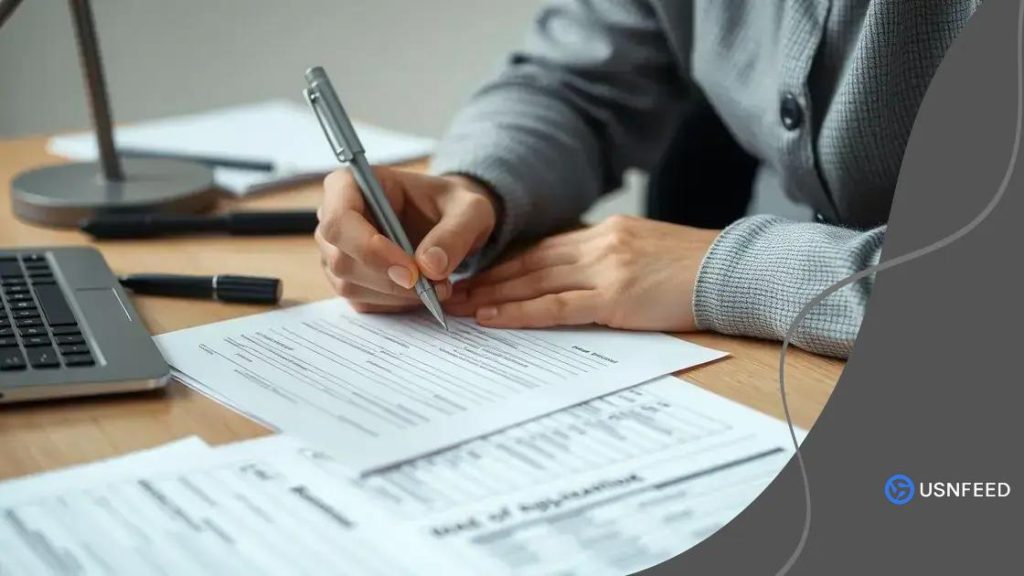Disability benefits application process: step-by-step guide

The disability benefits application process involves gathering necessary documents, completing the application accurately, avoiding common mistakes, and addressing any denials through appeals to secure financial assistance for individuals facing disabilities.
The disability benefits application process can feel overwhelming at times, but it doesn’t have to be. Many people find themselves unsure of where to start. This guide aims to simplify the journey, providing you with essential insights and actionable steps.
Understanding disability benefits
Understanding disability benefits is crucial for anyone facing challenges due to physical or mental health conditions. This process can significantly aid individuals in maintaining a stable life despite unforeseen difficulties.
What Are Disability Benefits?
Disability benefits provide financial support to those unable to work due to a qualifying disability. These benefits can come from federal programs, state initiatives, or even private insurance plans. It’s important to understand which type of benefits applies to your situation.
Types of Programs
- Social Security Disability Insurance (SSDI)
- Supplemental Security Income (SSI)
- Workers’ compensation for job-related disabilities
- State-specific disability programs
Each program has different eligibility criteria and application processes. For instance, SSDI is typically available to those who have worked and paid into the system, while SSI is based on financial need.
When you apply for disability benefits, you’ll need to provide documentation of your medical condition. This may include medical records, treatment history, and possibly personal statements regarding how your disability affects your daily life.
Eligibility Criteria
Eligibility for disability benefits can vary widely depending on the specific program. Common criteria include:
- A diagnosed medical condition that meets the Social Security Administration’s criteria.
- Limited work history for SSI applicants.
- Proof of inability to maintain gainful employment due to your disability.
Understanding these factors can be beneficial when preparing your application. Many applicants are initially denied benefits and may need to appeal the decision.
In conclusion, grasping the fundamentals of disability benefits helps ensure you are well-informed. This knowledge allows you to navigate the complex application process more effectively and increases your chances of receiving the support you need.
Eligibility criteria for benefits
Eligibility criteria for disability benefits can vary based on the program you are applying for. Understanding these criteria is essential for a successful application.
General Criteria
Most programs have some common requirements that you should be aware of. These include a diagnosed medical condition that significantly impairs your ability to work. Additionally, documentation of your disability must be provided, which includes medical records and treatment history.
SSDI and SSI Specifics
For Social Security Disability Insurance (SSDI), you typically need to have sufficient work history and have paid into Social Security. In contrast, Supplemental Security Income (SSI) does not require work history, but rather it focuses on your financial situation. This means your income and resources will be assessed to determine eligibility.
It’s also important to show that your disability is expected to last at least 12 months or result in death. Gathering the necessary documentation can help speed up the assessment process.
Additional Considerations
- Work credits can affect SSDI eligibility.
- State-specific programs may have different requirements.
- Age and education can play a role in the evaluation.
Being prepared with all required documents and understanding your eligibility can make the application process smoother. Many applicants find that knowing what to expect allows them to approach the process with greater confidence.
Remember to review your application thoroughly before submission. Any inaccuracies can lead to delays or outright denial, so double-checking your information is key.
Step-by-step guide to apply

A step-by-step guide to apply for disability benefits can make the process easier and less stressful. By following the right steps, you increase your chances of approval.
Gather Necessary Documents
Before starting your application, collect all necessary documents. This includes medical records, proof of income, and any relevant information regarding your work history. Having everything ready helps streamline the process.
Fill Out the Application
You can apply for disability benefits online, by mail, or in person at your local Social Security office. Take your time when filling out the application. Be sure to provide as much detail as possible about your medical condition and how it impacts your ability to work.
- Use clear and simple language.
- Be honest about your limitations.
- Include information about treatments and medications.
Once the application is complete, review it thoroughly. Check for any mistakes or missing information that could delay the process.
Submit Your Application
After reviewing, submit your application. If you are applying online, you will receive a confirmation number. If by mail, consider sending the forms via certified mail for tracking purposes.
Follow Up
After submission, keep track of your application status. You can check your status online or by contacting the Social Security Administration. It’s important to respond quickly if they request additional information.
Many applicants experience delays or are initially denied benefits. If that happens, don’t get discouraged; you can appeal the decision. Understanding the steps can help you stay informed and advocate for your rights throughout this process.
Common mistakes to avoid
When applying for disability benefits, avoiding common mistakes can significantly impact your chances of approval. Recognizing these pitfalls early on can save you time and frustration.
Incomplete Applications
One frequent mistake is submitting an incomplete application. Ensure that you provide all required information. Missing details can lead to delays or denials. Double-check each section for accuracy before submitting your application.
Insufficient Medical Evidence
Many applicants do not supply enough medical evidence to support their claim. Documentation is crucial. Include your medical records, treatment history, and any statements from your doctors. This evidence helps substantiate your claim effectively.
- Ensure medical records are current and comprehensive.
- Gather notes from all healthcare providers involved in your treatment.
- Request letters that explain how your condition affects your daily life.
All this information creates a clearer picture of your situation, which can aid in your approval.
Missing Deadlines
Another common mistake is missing crucial deadlines. Be aware of the timelines for submitting your application and any potential appeals. Mark your calendar and set reminders to avoid missing these important dates.
Neglecting to Follow Up
After submitting your application, failing to follow up can lead to problems. Regularly check the status of your application to stay informed. If additional information is requested, respond promptly to prevent unnecessary delays.
Being proactive is key to navigating the disability benefits process successfully. By avoiding these common mistakes, you will have a better chance of receiving the benefits you deserve.
What to do if your application is denied
If your application for disability benefits is denied, it can be disheartening. However, there are steps you can take to appeal the decision and increase your chances of receiving the benefits you need.
Understand the Reason for Denial
The first step after a denial is to carefully review the notice you received. It will explain why your application was denied. Common reasons include a lack of medical evidence, not meeting the definition of disability, or insufficient work credits.
Gather Additional Evidence
Once you understand the reason for the denial, you may need to gather additional medical evidence or documentation to support your case. This might include:
- Updated medical records from your healthcare providers.
- Detailed statements about how your condition affects your daily life.
- Reports from specialists if you have seen them.
Having comprehensive evidence can strengthen your appeal significantly.
File an Appeal
You generally have 60 days from the date of your denial to file an appeal. The appeal process can be complex, so consider seeking assistance from a qualified representative or attorney. They can guide you through the process and help present your case effectively.
Keep Track of Your Appeal Status
After filing your appeal, keep track of its status. You can do this online or by contacting the Social Security Administration. Staying informed helps you respond quickly if they request further information.
Appealing a denial can be a challenging but necessary process to secure disability benefits. Remaining persistent and informed can lead to a successful resolution. Don’t hesitate to seek support from professionals who specialize in disability claims.
FAQ – Frequently Asked Questions about the Disability Benefits Application Process
What should I do first when applying for disability benefits?
Begin by gathering all necessary documents, such as medical records and proof of income, to support your application.
How can I avoid common mistakes in my application?
Carefully review your application for completeness and accuracy before submitting to minimize errors.
What should I do if my application for disability benefits is denied?
Review the denial letter, gather additional evidence, and consider filing an appeal within 60 days.
Is assistance available for the application process?
Yes, you can seek help from professionals such as attorneys who specialize in disability claims.